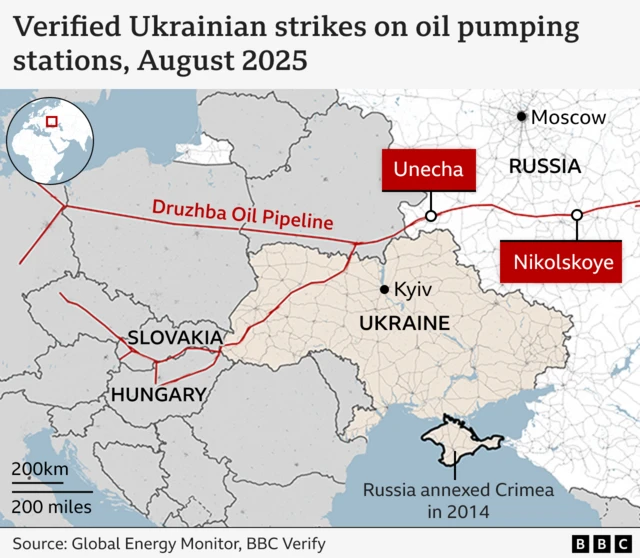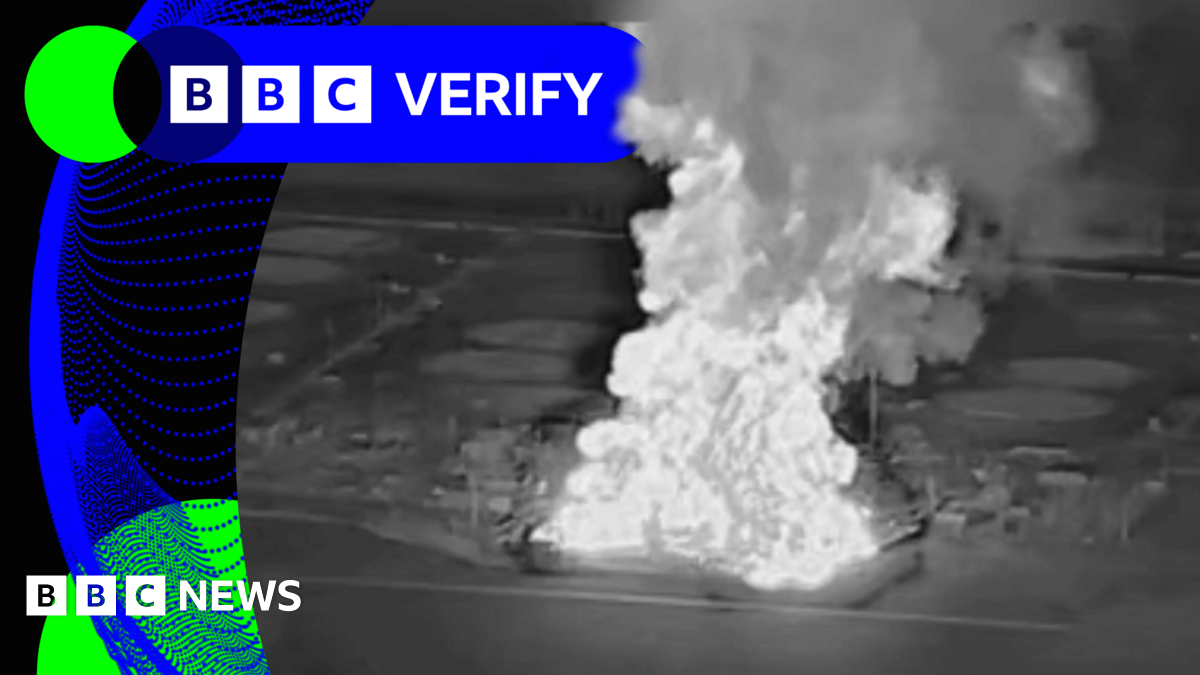What is the Druzhba oil pipeline?published at 13:13 British Summer Time
13:13 BST
Thomas Copeland
BBC Verify Live journalist
We’ve verified three Ukrainian strikes on the Druzhba oil pipeline since the beginning of August including a second attack on a pumping station near Unecha last night.
This follows a strike on a site near Nikolskyoye earlier this month.
Ukraine and Russia have stepped up attacks on each other’s energy infrastructure over the past few weeks and the Druzhba pipeline has become a key Ukrainian target.

The 4,000km (2,500 mile) Soviet-era pipeline has long been the major transit route for oil supplies from Russia into Europe.
Since Russia’s full-scale invasion of Ukraine in 2022, however, the European Union has reduced its imports with the aim of phasing out Russian oil and gas entirely by the end of 2027.
Member states Slovakia and Hungary are the only EU countries still importing Russian crude oil and they oppose this phasing out, arguing their economies rely on energy imports from Russia.
Hungary imported €200m (£173m; $232m) of Russian crude oil in July via the Druzhba pipeline.
Slovakia was just behind at €169m (£146m; $200m), according to Petras Katinas of the Centre for Research on Energy and Clean Air.
About 5% of Russian crude oil exports have flowed through the Druzhba pipeline so far this year, Katinas told BBC Verify.
